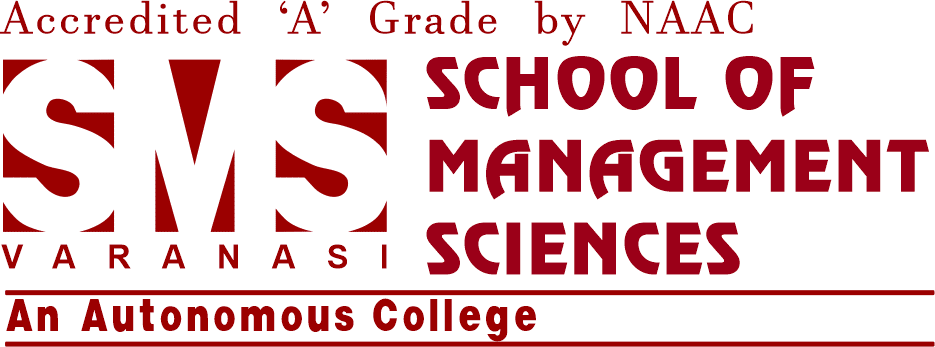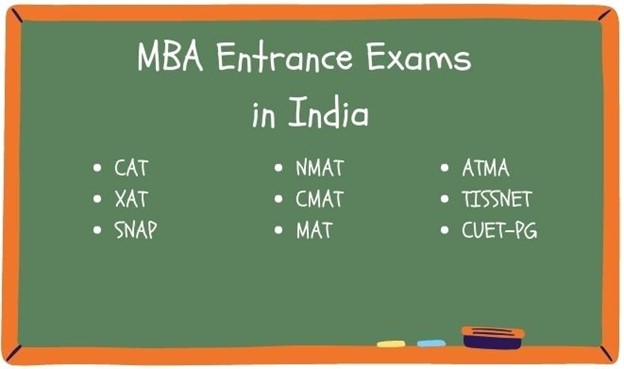Earning an MBA is an aspiration for many professionals in India, providing them with the necessary skills and knowledge to succeed in the corporate world. To achieve this goal, candidates must clear some of the top MBA entrance exams.
For 2023, the key MBA entrance exams in India are:
CAT – Common Admission Test
Organizing Institute: Indian Institutes of Management (IIMs)
Difficulty Level: High
Popularity: Most popular MBA entrance exam, essential for admission in IIMs and several other top B-schools in India
XAT – Xavier Aptitude Test
Organizing Institute: XLRI Jamshedpur on behalf of Xavier Association of Management Institutes (XAMI)
Difficulty Level: High, especially the Decision Making and General Knowledge sections
Popularity: Very popular, primarily for admission in XLRI, XIMB, and other Xavier institutes
SNAP – Symbiosis National Aptitude Test
Organizing Institute: Symbiosis International University
Difficulty Level: Moderate
Popularity: Quite popular for admission in the various institutes under Symbiosis University
NMAT – NMIMS Management Aptitude Test
Organizing Institute: GMAC (Graduate Management Admission Council)
Difficulty Level: Moderate
Popularity: Considerably popular for admissions in NMIMS and other participating institutes
CMAT – Common Management Admission Test
Organizing Institute: National Testing Agency (NTA)
Difficulty Level: Moderate
Popularity: Fairly popular, accepted by many AICTE-approved management institutes
MAT – Management Aptitude Test
Organizing Institute: All India Management Association (AIMA)
Difficulty Level: Moderate
Popularity: Quite popular as it’s conducted four times a year and accepted by numerous B-schools across India
ATMA – AIMS Test for Management Admissions
Organizing Institute: Association of Indian Management Schools (AIMS)
Difficulty Level: Moderate
Popularity: Accepted by many MBA colleges, but less popular compared to CAT, XAT, and CMAT
TISSNET – Tata Institute of Social Sciences National Entrance Test
Organizing Institute: Tata Institute of Social Sciences (TISS)
Difficulty Level: Moderate
Popularity: Primarily for admission in TISS, a highly reputed institute for courses in Social Sciences and Human Resource Management
CUET-PG – Common University Entrance Test-Postgraduate
Organizing Institute: Central Universities
Difficulty Level: Moderate
Popularity: Newly introduced, so popularity is gradually increasing for admission in postgraduate programs across central universities in India.
Each of these entrance exams has a unique standing in the academic arena, with their distinct difficulty levels and popularity based on the colleges accepting their scores. It’s advisable to choose the entrance exam based on your career aspirations, strengths, and the B-School you’re aiming for.
Essential Strategies for MBA Entrance Exam Preparation

Regardless of the exam you aim to conquer, there are some universal exam preparation tips and strategies to bear in mind:
- Comprehend the Exam Pattern and Syllabus: Gain a thorough understanding of the exam pattern and syllabus to steer your preparation in the right direction.
- Practice with Mock Tests and Previous Year Papers: Familiarize yourself with the exam’s dynamics, question types, and difficulty level through consistent practice.
- Manage Your Time Efficiently: Time management is crucial during the exam. Practicing with a timer can enhance your speed and accuracy.
Let’s dive into how to prepare for top MBA entrance exams in India:
CAT Preparation Tips

Preparing for the CAT 2023 involves not just knowing the syllabus, but also employing smart strategies to maximize your score. CAT 2022 topper, Rishi Agrawal, prioritized the Verbal Ability and Reading Comprehension (VARC) section and data interpretation and read daily on topics of interest to him.
For 2021 topper, Chirag Gupta, reading extensively was key for the VARC section, while focusing on getting basics right in the beginning was essential for the Quant section. Bir Anmol Singh, also a topper in 2021, achieved a high score through self-study and practicing past year CAT question papers.
Exam preparation tips from the CAT topper 2020, Kshitiz Singhal include starting by understanding the exam pattern and syllabus and then moving on to taking mock tests. He bought study materials and took a mock test series from noted institutes for practice purposes.
The 2019 toppers, Somansh Chordia, and Rishi Mittal highlighted the importance of practice, with Chordia focusing on understanding the common mistakes he was making, while Mittal advised that the more mocks you give, the easier it gets to crack DILR.
The 2018 toppers, Rounak Majumdar and Swapnil Suman, both stressed the importance of mock tests in CAT preparation. Majumdar’s entire preparation was based on taking mock tests, which he believed is crucial for all CAT aspirants, while Suman advised him to analyse each mock and observe mistakes for continual improvement.
The toppers from 2017, Chhavi Gupta and Meet Agrawal, mentioned how limited time and full-time jobs affected their preparation, but they both relied on mock tests for successful preparation. Chhavi studied mainly on the weekends and joined a coaching institute, while Meet attempted as many past year CAT question papers as possible.
The toppers from 2016, Avidipto Chakraborty and Akshay Mehndiratta, also found mock tests to be invaluable in their preparation, with Chakraborty emphasizing that if you’ve attempted a good number of mocks, nothing will surprise you, and Mehndiratta focusing on smart preparation in a limited time.
XAT Preparation Tips

Preparing for the XAT exam involves a different approach from other MBA entrance exams, mainly due to the Decision Making section unique to XAT. Toppers have emphasized the importance of practicing previous years’ XAT questions to familiarize oneself with the exam’s specific demands.
For instance, Farzan Shaikh, the 2021 topper, focused on Decision Making questions using past year papers. He also read and summarized articles from various sources to improve his reading comprehension. The 2020 topper, Suresh Jadia, adopted the mock analysis approach due to time constraints, where he gave as many mocks as he could and invested more time in analyzing them.
The 2019 topper, Sarthak Kumar, offered exam preparation tups that relied heavily on solving as many questions as possible and giving as many mocks as possible, with a special focus on the Quantitative Ability section. For the Decision Making section, he used past years’ XAT questions. Aditya Ganesh, who topped in 2018, emphasized the importance of focusing on one’s strengths. He practiced as many questions as he could and used mocks to figure out his strengths and weaknesses.
Neha Jaggannath, the 2017 topper, recommended familiarizing oneself with a variety of articles for the Verbal Ability section, and solving as many previous years papers and mock test series as possible for the Decision Making section.
According to Rajas Yotikar, another 2017 topper, the last month of preparation should be spent solving mock tests to get in the zone. Priyadarshi Dasgupta, who scored 99.72 percentile in XAT 2017, had specific strategies for different sections, like reading through all the questions once and targeting the ones that can be done quickly first for the Quant section, or attempting the questions as quickly as possible after one reading and then re-reading for the Verbal Ability section.
SNAP Preparation Tips

SNAP preparation is not as intensive as other MBA entrance exams such as CAT, NMAT or XAT. The syllabus for SNAP is similar to these exams, but it’s crucial to practice SNAP-specific questions. The exam is conducted annually on three days and candidates get two attempts. This provides a chance to improve scores and makes SNAP more student-friendly.
However, effort and time commitment required for preparation are similar to other MBA entrance exams. The ideal preparation period is three to six months, and it is vital to have a strategic preparation plan.
Each section of the SNAP exam requires a different preparation approach. For the General English section, focusing on reading comprehension and developing strong grammar fundamentals is necessary. The Analytical and Logical Reasoning section tests logic-based skills, which can be honed through extensive practice.
The Quantitative, Data Interpretation and Data Sufficiency section is a mix of calculation and logic-based questions. Regular revision of theorems, formulae, and concepts is the best strategy. A key tip for acing the SNAP exam is to choose questions that can be solved accurately and quickly.
Practicing mock tests is one of the most essential SNAP exam preparation tips. Mock tests, sample papers and previous year question papers give an idea of the type of questions asked and the trend of difficulty level. They also prepare candidates for the actual exam format.
Moreover, the SNAP mock tests and sample papers provide exposure to a variety of questions, helping prepare for surprise questions. Analyzing performance after each mock test helps assess strengths and weaknesses. On the exam day, there is no sectional limit, so candidates can start with their strongest section. Avoid spending more than one minute on any question due to the negative marking scheme.
NMAT Preparation Tips

The Graduate Management Admission Council (GMAC) conducts the NMAT exam annually for admissions to over 40 business schools, both in India and abroad. The exam is less difficult compared to other MBA entrance exams and attracts a significant number of applicants due to its popularity and level of difficulty.
The exam shares a similar syllabus with other MBA entrance exams, and candidates who have prepared for other exams will have an added advantage. Candidates have three attempts within a testing window to take the exam, which runs from October to December.
The preparation for NMAT 2023 should start early with a well-planned strategy and a daily timetable. The preparation plan should include obtaining NMAT preparation books and study materials, devising a timeline to complete the NMAT syllabus, practicing mock tests and sample papers, taking advice from NMAT toppers and experts, and strategising for the exam day.
Each section of the NMAT exam has equal weightage, but the time allocation differs. Hence, candidates should focus equally on each section while being mindful of their strengths and weaknesses.
Taking mock tests is crucial as it prepares candidates for different eventualities and gives them an understanding of the exam’s format and pattern. They also help to analyse performance and identify areas of strengths and weaknesses.
Preparing for NMAT in a limited time, such as six months, three months, or even one month, requires strategic planning and division of the preparation period into phases of syllabus coverage, mock test practice, and revision. As the exam day approaches, it’s crucial to stay calm, avoid last-minute revision, and arrive at the exam centre ahead of time.
CMAT Preparation Tips

The Common Management Admission Test (CMAT) 2023 was conducted on May 4, 2023. The National Testing Agency (NTA), which administers the exam, provides previous papers to aid in understanding the question paper structure. Since CMAT is an online computer-based test, it’s essential to familiarize oneself with this format.
The CMAT 2023 exam includes five sections with equal weightage: Language Comprehension, Quantitative Techniques and Data Interpretation, Logical Reasoning, General Awareness, and Innovation & Entrepreneurship.
It’s crucial to have a clear goal while preparing for CMAT exam. Candidates should aim for admission into top CMAT score accepting institutions like JBIMS Mumbai, SIMSREE Mumbai, K J Somaiya Mumbai, Great Lakes Institute of Management, PUMBA Pune, and others.
CMAT 2023 featured five compulsory sections, with the time duration reduced to three hours, the total number of questions reduced to 100, and no additional time given for the fifth section.
After understanding the exam pattern and syllabus, candidates should choose their preparation mode and allocate time for preparation. This should be followed by choosing the appropriate preparation books and then devising a preparation strategy.
MAT Preparation Tips

Before preparing for the Management Aptitude Test (MAT), candidates should familiarize themselves with the MAT syllabus, which comprises five sections: Language Comprehension, Intelligence and Critical Reasoning, Data Analysis and Sufficiency, Mathematical Skills, and Indian and Global Environment. Each section requires a unique approach for preparation.
In Language Comprehension, it’s recommended to focus on improving reading speed, English grammar, and verbal ability. For Mathematical Skills, focus should be on concepts, theorems, speed calculation, and working on weak areas.
The Data Analysis and Sufficiency section of the MAT exam typically requires a good grasp of interpreting data and analytical skills. Candidates should practice understanding charts, graphs, and tables, analyze data efficiently, and manage time well during the exam.
For the Intelligence and Critical Reasoning section, candidates should carefully view the questions based on fact, logic, and opinion parameters. Candidates should not assume any answers and should analyze questions, contradictory statements, and conclusions. Also, it’s essential to practice a variety of Intelligence and Critical Reasoning sample questions to gain speed and accuracy.
The last section, Indian and Global Environment, tests general awareness with straightforward questions on topics like current affairs, awards, political events, and technological advancements. To prepare well for this section, candidates should religiously follow current affairs and news, watch news debates and shows on Television and YouTube, and memorize static General Knowledge topics from reliable sources. This section does not require any critical thinking or calculations, and hence, is the least time-consuming section.
It’s important to note that the marks of all sections, except Indian and Global Environment, are considered for overall percentile calculation.
ATMA Preparation Tips

ATMA aspirants are advised to begin preparation for the exam at least one year in advance. To gain a robust understanding of the ATMA syllabus, it is recommended to solve previous years’ question papers and ATMA mock tests. Initially, students should focus on learning the basic concepts and fundamentals of the topics.
ATMA, one of the most popular MBA exams in India, comprises sections such as Quantitative and Verbal Skills and Analytical Reasoning. To secure a good overall score, it’s crucial to perform well in all these sections. Both online and offline study materials are available to aid in the preparation process.
Understanding the exam pattern is vital while preparing for the ATMA exam. The test paper contains 180 questions divided into six sections, each section containing 30 questions to be completed in 30 minutes. The exam mode is an AI & Live Human Proctored home-based online test. The ATMA marking scheme grants one mark for each correct answer and deducts 0.25 marks for every incorrect answer. Having this information helps students to prepare a more effective study plan.
To prepare effectively for ATMA 2023, candidates should establish a study routine that includes an understanding of the ATMA syllabus and the use of correct and relevant study material.
For the Analytical Reasoning section, solving puzzles, riddles, and syllogisms can enhance candidates’ skills. For Quantitative Skills, brushing up on math skills, learning formulas, and tricks for solving long equations are beneficial.
For the Verbal Skills section, improving vocabulary and focusing on topics like grammar, reading comprehension, and sentence completion can yield better marks. Reading newspapers and magazines is also beneficial for this section.
TISSNET Preparation Tips

TISSNET preparation is a process that allows candidates to cover the entire syllabus and important topics in a timely manner. Some basic preparation tips include practicing chapter-wise questions and sample papers, analyzing personal strengths and weaknesses, and creating a study timeline for section-wise preparation.
TISSNET exam is a national-level MBA Entrance Exam and is highly competitive, hence requiring an effective and strategic preparation plan. Each section of the exam tests different skills. English Proficiency focuses on grammar, vocabulary, reading comprehension and more, requiring a strong base in English language and grammar skills.
Mathematical and Logical Reasoning section tests numerical skills and involves chapters related to Mathematics, requiring brushing up on mathematical calculations. General Awareness section covers topics related to static GK and current affairs. In-depth knowledge of these areas is necessary to clear cut-offs.
Section-wise preparation strategies include regular practice, creating a structured study plan, and focusing on areas of weakness. For English Proficiency, it is recommended to read novels, newspapers, and magazines to enhance vocabulary, maintain a diary of uncommon words, and practice reading comprehension.
For Mathematical and Logical Reasoning, trying new approaches to solve problems, revising mathematical formulas, and practicing shortcut tricks for calculation are recommended. For General Awareness, keeping track of current affairs and studying books on History, Geography, Economics, Sports, and Politics can help.
Lastly, it is crucial to revise regularly, follow a study plan, solve previous years’ questions, and make notes during preparation.
CUET-PG Preparation Tips for MBA Aspirants

NTA released the CUET PG (MBA) 2023 syllabus for the domain-specific subjects along with the information brochure on March 20. The syllabus for the 2023-24 academic session remains the same as the previous years. The structure of the expected CUET PG (MBA) question paper includes sections/subjects such as:
- Hindi/English Language Comprehension,
- Verbal Ability,
- Mathematical/ Quantitative Reasoning,
- Data Interpretation, and Logical Reasoning.
The Language Comprehension/Verbal Ability section is compulsory. For the English Comprehension section, topics like English Grammar, English Usage Errors, Reading Comprehension, and Synonyms & Antonyms, among others, are included.
For the Mathematical/Quantitative Ability section, topics such as Simple Interest and Compound Interest, Percentages, Time-Speed-Distance, and Time and Work, among others, are included.
Candidates are expected to face intense competition from across the country for CUET PG 2023. Preparation tips include knowing the syllabus and exam pattern, beginning preparation well in advance, and preparing a study plan and schedule. It’s important to execute the study plan and avoid distractions.
Referring to various learning resources, such as best study materials, previous years’ papers, and mock tests, is also essential to enhance CUET PG preparation. Preparing for these exams might seem daunting, but with a well-planned strategy, determination, and regular practice, success is within your reach. Remember that these exams are just the first step in your MBA journey. At SMS Varanasi, you can apply for MBA program with scores of any of these exams.





